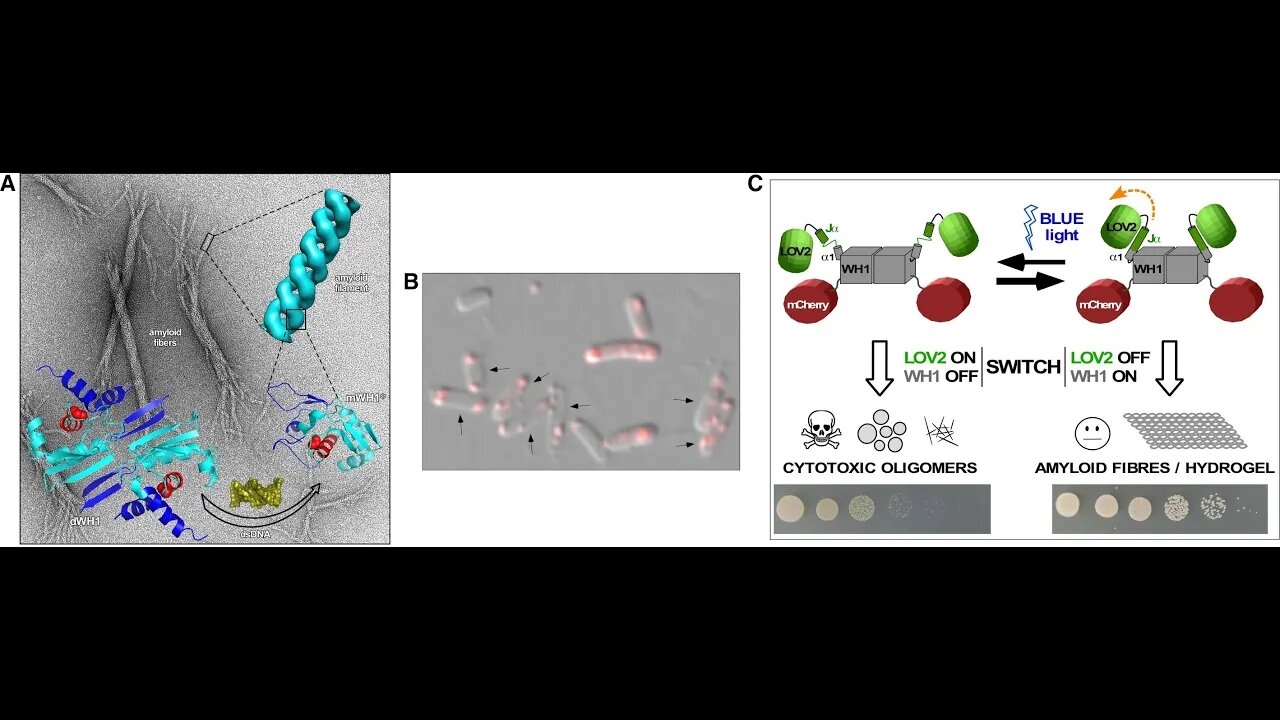Premium Only Content

RepA-WH1 Prionoid
RepA-WH1, the agent of an amyloid proteinopathy in bacteria, builds oligomeric pores through lipid vesicles
https://www.ncbi.nlm.nih.gov/pmc/articles/PMC4794723/
What is EGCG? Green Tea
Epigallocatechin-3-gallate (EGCG): chemical and biomedical perspectives
https://pubmed.ncbi.nlm.nih.gov/16876833/
RepA-WH1 in the news 30 June 2020
SynBio and the Boundaries between Functional and Pathogenic RepA-WH1 Bacterial Amyloids
To fulfill the current expectations on the use of amyloid nanomaterials in SynBio applications, achieving control of amyloid nucleation and growth and of any potential cytotoxic side effects is an essential goal. As addressed here, ligand-promoted amyloidogenesis can provide such fine-tuned levels of regulation and thus should be explored further. Conversely, engineering amyloid cytotoxicity in bacteria, coupled to horizontal gene transfer, might enable new ways to selectively eliminate either bacterial pathogens or specific bacteria from an engineered microbial consortia to program changes in strain composition in biotechnological processes, as proposed for light-modulated cell ablation by “optobiotics” (63). It might be interesting to test synthetic bacterial prion-like proteins, as generated by engineered microbiota, in the current animal models of human amyloidoses to assess their possible effect on disease onset and progression. Small bacterium-related mobile genetic elements encoding just a protein carrying a domain like RepA-WH1 have been isolated from bovine meat and dairies, and also from primary human tumors while the patients developed antibodies against the protein (80). So probably, there is still plenty of room to be explored for bacterial amyloids in human diseases.
https://journals.asm.org/doi/full/10.1128/mSystems.00553-20
SYNTHETIC BACTERIAL AMYLOIDS
https://www.cnb.csic.es/index.php/en/investigacion/departamentos-de-investigacion/biotecnologia-microbiana/amiloides-bacterianos-sinteticos
-

Epstein Borreliosis AIDS
2 years agoMel Thornburg, Sepsis
1.49K12 -
 10:17
10:17
Dr Disrespect
18 hours agoIt's Time To Get Serious
43K9 -
 7:55:30
7:55:30
SpartakusLIVE
11 hours agoDuos w/ Sophie || Charity stream tomorrow!
78.9K -
 58:43
58:43
Sarah Westall
10 hours agoBecause Voluntary Extermination is a Thing: Israel-Gaza w/ Award Winning Journalist James Robins
58K21 -
 4:44:13
4:44:13
BubbaSZN
11 hours ago🔴 LIVE - TRYING TO NOT BUST A$$ THIS TIME (THPS3+4)
46.1K1 -
 8:42:11
8:42:11
sophiesnazz
14 hours ago $2.69 earnedGENUINE BELTERS IN ERE l LIVE WITH @SpartakusLIVE!socials
55.3K2 -
 1:15:18
1:15:18
Glenn Greenwald
12 hours agoTrump Promises More Weapons for Ukraine; Trump Again Accuses Dems of Fabricating Epstein Files | SYSTEM UPDATE #487
151K93 -
 3:48:04
3:48:04
This is the Ray Gaming
8 hours ago $2.39 earnedTuesday Night is FOR THE BOYS | Rumble Premium Creator
27.4K3 -
 3:14:45
3:14:45
RaikenNight
8 hours ago $0.48 earnedDon't know what to play so I am doing a hangout stream
18.7K2 -
 2:14:46
2:14:46
RiftTV
13 hours agoTrump TRIPLES Down on Epstein COVER-UP.. MAGA Base ERUPTS | The Rift | Sarah Stock & Anna Perez
70.8K25